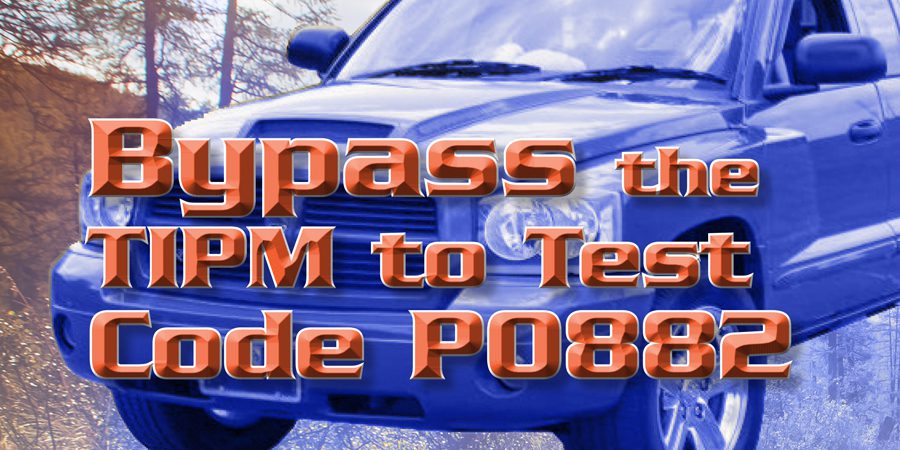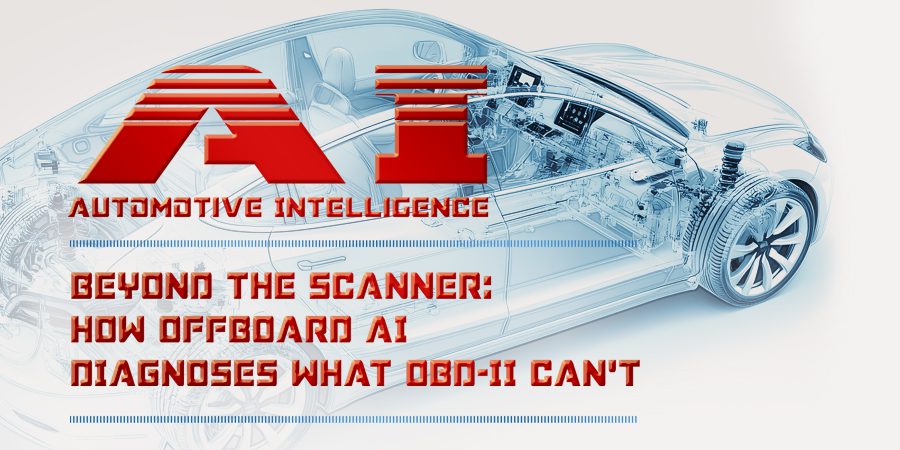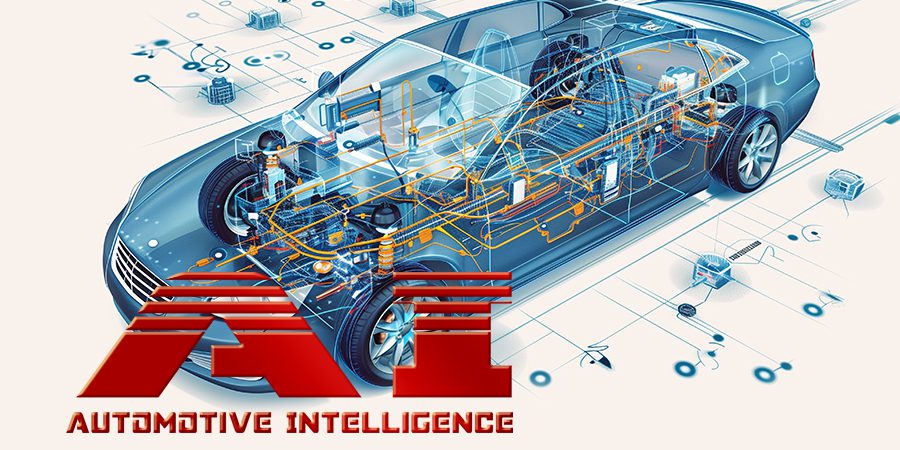Into everyone’s life a little rain will fall. Or, in this case, the U0101 Loss of Communication with TCM. The code is as simple as the description; there’s a lack of communication to the TCM module. There are a variety of causes for this fault, from damaged wires, faulty modules, corrosion, or installation issues.
In General Motor’s applications, the CAN system is divided by speed and capability. There’s a high-speed, a low-speed, and, in some instances, a medium-speed network. Each type is used differently based on needs and capability. The low-speed network will carry information such as door ajar, external lighting state, and essentially lower-priority information where speed is not as important. The high-speed network is very fast and will carry data such as speed sensor signals, engine timing, transmission gear request, temperature sensor, braking information including wheel speed sensors, and vehicle stability status and request. Essentially, any data must be shared between different controllers where timing is absolutely necessary.
For the discussion of this article, the U0101 Loss of Communication with the TCM, we’ll be looking at the highspeed network (Figure 1). GM refers to this network as the HS GMLAN. You’ll see it on schematics and connector identification tables. The LAN part of that description is Local Area Network. This is the same terminology as the network used in many businesses, schools, and homes.  It is a computer network that is physically linked by cables or wires. In our vehicles, each module that has information to share or needs shared information is connected to this LAN. Our HS GMLAN connects the engine control module, the transmission control module, the body control module, the ABS module, and, in some applications, the power steering control module. Depending on the vehicle configuration, there can be other modules, but we’ll keep it limited to those listed to simplify diagnostics.
It is a computer network that is physically linked by cables or wires. In our vehicles, each module that has information to share or needs shared information is connected to this LAN. Our HS GMLAN connects the engine control module, the transmission control module, the body control module, the ABS module, and, in some applications, the power steering control module. Depending on the vehicle configuration, there can be other modules, but we’ll keep it limited to those listed to simplify diagnostics.
The typical network GM utilizes, called GMLAN, is a line design. Each module is linked to 1 or 2 other modules that form a chain. In Figure 1, we can see how that topography is laid out. Data sent from one module to a receiving module must pass through these links to reach its destination. If the ECM needed to send a message to the BCM, that data would pass through the TCM and the ABS connections first. Consider a typical engine start sequence.  With a keyed ignition, the sequence would start with the BCM receiving a voltage from the ignition switch, indicating that the switch was turned to the start position. The BCM would then check to see if the key is authorized through the passkey check, and then it would inform the ECM of the start request. The ECM would check the data from the TCM to verify whether the transmission is in Park or Neutral, and upon receiving that confirmation, it would then command the starter relay to engage the starter. Meanwhile, the BMC is still watching the ignition switch to verify that the key is authorized and will send a fuel enable message to the ECM. Now the engine is cranking over, the ECM is pulsing the injectors, and the engine starts.
With a keyed ignition, the sequence would start with the BCM receiving a voltage from the ignition switch, indicating that the switch was turned to the start position. The BCM would then check to see if the key is authorized through the passkey check, and then it would inform the ECM of the start request. The ECM would check the data from the TCM to verify whether the transmission is in Park or Neutral, and upon receiving that confirmation, it would then command the starter relay to engage the starter. Meanwhile, the BMC is still watching the ignition switch to verify that the key is authorized and will send a fuel enable message to the ECM. Now the engine is cranking over, the ECM is pulsing the injectors, and the engine starts.
All this time, the messages between the ECM and BCM have been passed through this chain of modules. If the vehicle used a “push to start” button, it would add another step to verify brake apply. And simultaneously the GMLAN network is sending messages and status updates from other modules and systems. It is a very busy network.
U0101 – LOSS OF COMMUNICATION WITH TCM
To begin diagnosing this code, we will try to narrow down the fault area. First, we need to know if this was present before any work had been performed on the vehicle.  If the transmission was replaced or other repair was performed, then we should look into those areas that were directly disturbed. For instance, a 6T40 was R&Rd, and on startup, a U0101 set. Inspection of the transmission connector should be the next step. A common mistake is made when removing the connectors with the flipstyle locking latch. As the lever is rotated around it’s easy to start pulling the connector to the side instead of straight up, and as a result, the end eyelets in the connector can spread open. Upon reinsertion, those pins may lose contact or fail to connect securely. Then, on startup, the TCM is unable to communicate with one or more modules, giving us the U0101. Other faults after repairs that need to be considered are incorrect or used modules installed for the application.
If the transmission was replaced or other repair was performed, then we should look into those areas that were directly disturbed. For instance, a 6T40 was R&Rd, and on startup, a U0101 set. Inspection of the transmission connector should be the next step. A common mistake is made when removing the connectors with the flipstyle locking latch. As the lever is rotated around it’s easy to start pulling the connector to the side instead of straight up, and as a result, the end eyelets in the connector can spread open. Upon reinsertion, those pins may lose contact or fail to connect securely. Then, on startup, the TCM is unable to communicate with one or more modules, giving us the U0101. Other faults after repairs that need to be considered are incorrect or used modules installed for the application.
 If this is a new job, and no other work has been performed prior, our diagnosis will change slightly, and we will do that by seeing what modules have this communication code as well as other communication codes. Remember, Figure 1 shows that some CAN layouts have the TCM with modules on either side of the network. There are some instances where the TCM is at the end of the network. That’s why checking the computer data lines and wiring schematics is important.
If this is a new job, and no other work has been performed prior, our diagnosis will change slightly, and we will do that by seeing what modules have this communication code as well as other communication codes. Remember, Figure 1 shows that some CAN layouts have the TCM with modules on either side of the network. There are some instances where the TCM is at the end of the network. That’s why checking the computer data lines and wiring schematics is important.
Using the Figure 1 configuration, let’s say that we only have the ECM with U0101 present. That would mean the remaining network is working, and if we check the ABS and BCM, we’d likely discover a U0100 (Loss of Communication with ECM) present in those modules. In Figure 2, we can check for a break in the CAN wiring at position A. If we found U0101 in the ECM as well as the ABS and BCM, then a break in connection would be represented by position B. If only the ABS and BCM had U0101 stored then a break at C is suspect and finally only the BCM has the U0101 showing then a break in position D is likely.
The most common calls we get with U0101 are multiple modules with this code present: the ECM, BCM, ABS, and any other module that requires TCM information. There are other supporting codes, such as U0100, in the BCM, and if we check the ECM, we find it may have U0140 Loss of Communication with the BCM. This is a supporting code, aka a clue. This tells us there is a hard break in CAN lines. In these cases, we need to determine that the TCM is receiving proper power, ground, and the signal to turn on. Once that’s confirmed, the next question we ask ourselves is, is this a faulty TCM or a wiring fault? This can be determined by bypassing the TCM in the CAN chain.
If we jump the CAN wires at the TCM connector (Figure 3), we can re-route the CAN communications around the TCM and then go back to our scanner to see if those supporting codes are gone. An ECM that can communicate with the BCM (and vice versa tells) us if the wires are damaged. This will save you a lot of time checking wires. We can do this by removing the TCM connector and locating the CAN wires. Here again, a schematic is required, and a connector view is very helpful.
For example, we’ll use a 2012 Chevrolet Malibu with a 2.4l and a 6T40 transmission. Here, we’ll find two pairs of CAN wires, one to link the TECHM to the ECM and the other to the TEHCM to the ABS module (Figure 4).
To bypass the TEHCM, we can jump those pairs together, matching the color of the wires. In this example, the wire colors are Tan and Tan w/black stripe. It doesn’t matter which end goes where; we just need to jump from Tan to Tan and then Tan/black to Tan/black (Figure 5).
 Leave the connector off, turn the key on, and then scan for codes again. If your supporting codes, U0101 and U0140, are now gone from the ECM and BCM, we know two things. First, the external wiring is functional. Second, we have either a contact problem at the TEHCM connector or a faulty TEHCM. If you have a like-type TEHCM, you can plug it in and check for U codes. It doesn’t have to be programmed to perform this test; it just needs to act as a bridge for the CAN network.
Leave the connector off, turn the key on, and then scan for codes again. If your supporting codes, U0101 and U0140, are now gone from the ECM and BCM, we know two things. First, the external wiring is functional. Second, we have either a contact problem at the TEHCM connector or a faulty TEHCM. If you have a like-type TEHCM, you can plug it in and check for U codes. It doesn’t have to be programmed to perform this test; it just needs to act as a bridge for the CAN network.
WHAT IF ONLY ONE SIDE OR MODULE HAS THE U0101?
In these cases, it often becomes easier. We can repeat the same test of jumping CAN wires at the TECHM to see if it’s a connector issue or an internal TCM fault. If we still have the fault, then we are looking at wiring or another module that is at fault. First, look at the computer data lines schematic and see what module is closest to the TCM that has the U0101. In our Malibu example, the ABS (EBCM) is that module. If it also has the U0101, we can bypass that module and rescan the BCM to see if it can now communicate with the TCM. If there’s no fault code change, we’ll check the wiring.
Now, you may be tempted to replace the wires, and that’s possible, but you need to remember that the CAN system is very active, a lot of fluctuations in voltage are taking place, and any interference from outside sources such as faulty coils may be picked up by the CAN system. You’ve undoubtedly noticed that some wires are twisted together, which is done to isolate that circuit from external influences. Since this interference in data transfer is a real possibility, locating and repairing the damaged wire is best. In many cases, it’s usually a wire loom that has worn through on a body panel or bracket. It can be spliced back together and then correctly routed to avoid repeat damage.
The frustrating side of these U codes is that the manufacturer does not provide diagnostic guidance. Instead, they give us vague suggestions and descriptions that are very generic. However, if we break down where the wires run and use the modules for self-diagnosis, we can narrow down the area or section of wires at fault.
















